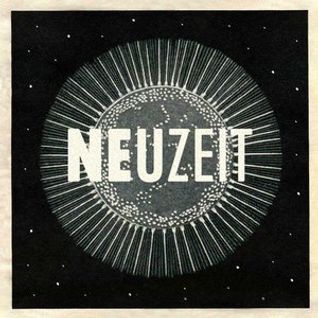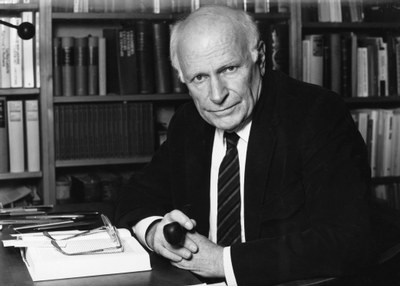Per Koselleck un’attenzione particolare merita la
cronologia, che altro non è che la misurazione del tempo. L’esperienza
temporale generalmente presenta tre caratteristiche:
Irreversibilità degli eventi.
Ripetibilità degli eventi.
Contemporaneità del non-contemporaneo («Gleichzeitigkeit der Ungleichzeitigen»),
ossia ricorrenza degli eventi.
La combinazione delle menzionate tre caratteristiche
consente di carpire la decadenza, accelerazione, ritardo o scoppio di un evento
storico.
La misurazione del Tempo si è concretizzata nel corso
della Storia attraverso tre tappe fondamnetali:
Antichità: Senza avere un concetto di Storia in sé e per
sé, i Greci e i Latini identificavano il processo temporale con gli eventi che
si verificavano. Attraverso gli eventi storici era possibile pervenire ad
alcune generalizzazioni e considerazioni di carattere universale. Dalla
contemporaneità del non-contemporaneo gli storiografi greci e latini
costruivano dei paradigmi sugli eventuali ricorsi storici.
Tradizione giudaico-cristiana: la Storia segue un corso
lineare dettato dal dogma, dal messianismo, dal millenarismo, dall’escatologia.
L’inizio del Tempo rappresenta un atto creativo di Dio, così come la fine del
tempo è incarnata dal Giudizio Universale. Con l’avvento del Messia-Cristo
inizia l’era di grazia, e dunque ha inizio la fine dei tempi.
Modernità: La Storia è studiata in sé e per sé. Una rilevanza
particolare è data all’esperienza, al dato empirico, alla verificabilità e
veridicità delle fonti. Si va ad applicare il metodo scientifico positivista
alla Scienza storica.
Quanto è
rilevante in storiografia il fattore “caso”? Secondo Koselleck, fintanto che il
discorso storico ha per obiettivo la correlazione ed il determinismo del corso
temporale degli eventi, il caso resta una categoria a-storica: il rapporto di
causalità tra eventi storici nega di per sé l’esistenza del caso. Il caso può però
descrivere quelle esperienze storiche che appaiono nuove, impreviste,
inaspettate, dunque in questo senso un evento può comparire inizialmente sulla
base del caso. Quando il fattore caso viene utilizzato da un punto
storiografico, esso indica l’impensata condizione che un evento si verificasse
in un dato modo, tempo e contesto. Il caso, o l’evenienza, venne estromesso nel
XIX secolo dal contesto storiografico grazie allo Storicismo (cfr. Novalis,
Herder, Vico) sia attraverso una sistematica estensione del principio di
causalità sia attraverso implicazioni teleologiche, filosofiche, idealistiche
ed estetiche insite nel concetto moderno di Storia.
Koselleck nota
come la storiografia presenti una dialettica fondata sulla negazione
dell’altro/diverso: e.g. Elleno/Barbaro; Cristiano/Pagano; Umano/Non-umano;
Superumano/Subumano (Übermensch/Untermensch).
La dialettica della discriminazione si fonda su diversi paradigmi:
Paradigma della
non-conoscenza: tipico dell’Antichità, il barbaro è colui che non si
(ri-)conosce. Ha diversi costumi, parla una lingua sconosciuta, ha una diversa Weltanschaaung. Il barbaro si ricollega
all’idea dell’inesplorato (Hic sunt
leones).
Paradigma
dell’esclusivismo teologico: tipico dell’era cristiana (o musulmana), il
pagano, l’infedele, l’eretico, lo scismatico, l’apostata è colui che o ignora,
o devia da o combatte contro la divina Verità rivelata.
Paradigma del
positivismo antropologico: tipico dell’Illuminismo, il non umano è il
selvaggio, l’uomo non educato all’europea, l’abitante delle terre di recente o
recentissima scoperta geografica.
Paradigma del
razzismo biologico: tipico del Novecento, il subumano è colui che appartiene ad
una razza inferiore, tanto sul piano fenotipico che psicologico; il superuomo è
al contrario colui che possiede le migliori caratteristiche razziali, sia
fisiche che spirituali.
Lo storico
tedesco si sofferma inoltre sulla relazione tra res factae e res fictae,
ossia sulla questione della veridicità del fatto storiografico. Il rapporto tra fatti veri e fatti
(apparentemente) falsi pone l’interrogativo circa quali fonti debbano essere
scartare perché «fittizie» o non sufficientemente «vere». La provocazione dell’autore
arriva a domandare al lettore quanto sia vero un sogno, e se il sogno possa
contenere elementi di verità che possano addirittura incidere sulle fonti
storiografiche. È noto che uno dei principali pericoli dello storico sia quello
di plasmare la Storia sulla base di veli di pregiudizi morali, psicologici,
politici. Il Romanticismo, ad esempio, ha colorito il resoconto storico con una
vasta gamma di elementi estetico-eroici che spesso pregiudicano la verità
storiografica. Di conseguenza è lecito chiedersi quanto sia attendibile un
romanzo storico: è giusto immaginarsi conversazioni (probabilmente) mai
avvenute in contesti storici realmente esistiti? Può la storiografia accettare
le mezze verità? Innegabilmente il problema delle res factae/res fictae
continua a presentare una sfida epistemologica per gli storici
contemporanei.
Infine, è
interessante soffermarsi sul rapporto tra Neuzeit
e Zeitgeschichte. Dal XVIII
secolo la storiografia parla sempre più dell’idea di una Storia moderna (letteralmente
Tempo Nuovo, ovvero Neuzeit).
L’espressione si riferisce soltanto al tempo, caratterizzandolo come «nuovo»,
senza però offrire alcuna indicazione circa il contenuto storico del medesimo,
o sulla sua natura come epoca o periodo. L’idea di suddividere la Storia nella
triade Antichità-Medioevo-Modernità sembra per molti aspetti riduttivo e
anacronistico. Secondo la comune opinione la Neuzeit (Storia moderna) dovrebbe approssimativamente abbracciare
il periodo che va dalla scoperta dell’America (1492) alla Restaurazione (1815).
Dopo di essa un nuovo concetto descrive il successivo evolvere del tempo: la Zeitgeschichte (Storia contemporanea),
che abbraccerebbe il periodo che va dal 1815 ad oggi. Grazie alla percezione di
una Neuzeit la Storia non è più
qualcosa che avviene all’interno del Tempo, bensì lungo il Tempo. Il Tempo
diviene una forza dinamica che scandisce le sorti dei popoli. Con la Neuzeit nasce la consapevolezza storica
che si collega ai destini sociali, economici, strategici e geopolitici delle
nazioni.
Riferimenti: Futuro passato. Per una semantica dei tempi
storici (Vergangene Zukunft. Zur Semantik
geschichtlicher Zeiten), 1979.




